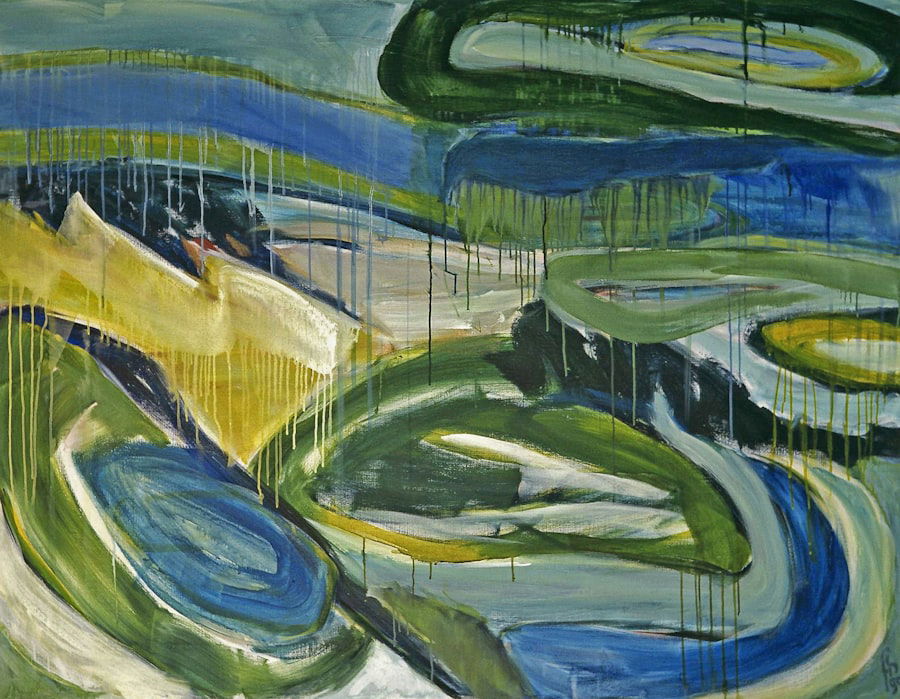Terence Cuneo was a prominent British artist renowned for his paintings of railways and locomotives. Born in London in 1907, he was the son of artist Cyrus Cincinato Cuneo. Terence studied at the Chelsea School of Art and the Slade School of Fine Art, developing his artistic skills.
His career gained momentum when he was appointed as a war artist during World War II, creating impactful paintings of wartime scenes. Following the war, Cuneo’s reputation grew, particularly for his vivid depictions of railways and trains. His childhood fascination with trains influenced his art, enabling him to capture the power and beauty of locomotives in a way that resonated with audiences globally.
Cuneo’s career was distinguished by numerous honors, including his appointment as the official artist for Queen Elizabeth II’s Coronation in 1953. He also became the official artist for British Railways, allowing him to further explore his passion for trains and railways. Throughout his career, Cuneo’s work was widely exhibited and collected, establishing him as a leading figure in railway art.
His paintings remain highly valued by collectors and enthusiasts, ensuring his enduring legacy in the art world.
Key Takeaways
- Terence Cuneo was a renowned British artist known for his iconic railway paintings and illustrations, as well as his work as an official war artist during World War II.
- Cuneo’s unique style and technique involved meticulous attention to detail and a focus on capturing the power and beauty of locomotives and railway scenes.
- The impact of railways on Cuneo’s art was profound, as he often depicted the grandeur and significance of railways in his paintings, showcasing their role in shaping the modern world.
- Some of Cuneo’s most famous railway artworks include “The Battle of Britain” and “The Coronation of King George VI,” which are celebrated for their historical and cultural significance.
- Cuneo’s legacy in the world of railway art continues to inspire artists and enthusiasts, as his work remains a timeless representation of the romance and nostalgia associated with railways.
Cuneo’s Unique Style and Technique
The Art of Capturing Movement
Cuneo had a remarkable ability to infuse his paintings with a sense of dynamism and movement, bringing his subjects to life on canvas in a way that few artists could achieve. His use of light and shadow added depth and drama to his compositions, creating a sense of atmosphere that drew viewers into the world of railways that he so passionately depicted.
A Balance of Realism and Artistry
Cuneo’s technique involved a careful balance of realism and artistic interpretation, allowing him to convey the power and majesty of trains while also imbuing his paintings with a sense of emotion and narrative. His compositions often featured trains in motion, capturing the exhilarating speed and energy of these mechanical marvels as they thundered across the landscape.
A Master of Perspective and Composition
Cuneo’s ability to convey the sheer scale and grandeur of locomotives was unparalleled, making his paintings not only visually stunning but also emotionally evocative. His mastery of perspective and composition further enhanced the impact of his work, creating immersive and captivating scenes that continue to captivate audiences to this day.
The Impact of Railways on Cuneo’s Art

The impact of railways on Terence Cuneo’s art cannot be overstated, as his deep fascination with trains and locomotives served as a driving force behind much of his work. From an early age, Cuneo was captivated by the power and beauty of trains, and this passion became a central theme in his art. The railways provided him with a rich source of inspiration, offering endless opportunities to capture the drama and excitement of steam engines hurtling through the countryside or pulling into bustling stations.
Cuneo’s paintings often featured railway scenes that showcased the industrial might and technological innovation of the locomotive era, celebrating the role of trains in shaping the modern world. The railways also held personal significance for Cuneo, as they represented a connection to his childhood and family history. His father, Cyrus Cincinato Cuneo, had also been an artist with a keen interest in depicting railway scenes, and this influence undoubtedly played a role in shaping Terence’s own artistic direction.
The railways were not just a subject for Cuneo; they were a part of his identity as an artist, providing him with a sense of purpose and passion that infused his work with an undeniable vitality. Through his paintings, Cuneo paid homage to the railways that had captured his imagination from an early age, immortalizing their enduring legacy in the annals of art history.
Cuneo’s Most Famous Railway Artworks
| Artwork | Artist | Location |
|---|---|---|
| La Madre dell’Emigrante | Giuseppe Gaggini | Cuneo Railway Station |
| Monument to the Fallen | Umberto Baglioni | Cuneo Railway Station |
| Monument to the Railwayman | Giuseppe Gaggini | Cuneo Railway Station |
Terence Cuneo created a vast body of work dedicated to railways, producing numerous iconic paintings that have become synonymous with his name. Among his most famous railway artworks is “The Battle of Britain Pacific Locomotive,” which depicts a powerful steam engine in action against the backdrop of a dramatic sky. This painting captures the raw energy and strength of the locomotive, showcasing Cuneo’s ability to imbue his subjects with a sense of life and vitality.
Another notable work is “Waterloo Station,” a stunning portrayal of one of London’s busiest railway terminals bustling with activity. In this painting, Cuneo masterfully captures the hustle and bustle of the station, infusing the scene with a palpable sense of movement and energy. Cuneo’s “Mallard at Peterborough” is another standout piece, showcasing the famous Mallard locomotive in all its glory as it speeds through the countryside.
This painting exemplifies Cuneo’s skill in capturing the sleek elegance and power of locomotives, highlighting his ability to convey both technical precision and artistic flair. “The Final Journey” is yet another masterpiece by Cuneo, depicting a poignant scene of a steam engine making its last run before being decommissioned. This painting reflects Cuneo’s ability to infuse his work with emotion and narrative, creating a powerful and evocative portrayal of the end of an era in railway history.
Cuneo’s Legacy in the World of Railway Art
Terence Cuneo’s legacy in the world of railway art is one that continues to resonate with enthusiasts and collectors alike. His contributions to the genre are widely regarded as some of the most significant and influential, shaping the way in which railways have been depicted in art for generations. Cuneo’s ability to capture the essence of locomotives and railway scenes with such skill and passion has left an indelible mark on the art world, inspiring countless artists to explore similar themes in their own work.
Cuneo’s legacy also extends beyond the realm of art, as his paintings have played a crucial role in preserving the history and heritage of railways. Through his art, Cuneo has immortalized iconic locomotives and historic railway scenes, ensuring that they will be remembered and celebrated for years to come. His work has become an invaluable resource for historians and enthusiasts seeking to understand and appreciate the significance of railways in shaping society and culture.
The Fascination with Cuneo’s Railway Art

Capturing the Spirit of Railways
One key aspect of Cuneo’s art is his ability to capture the spirit and energy of railways in a way that resonates with viewers on a deeply emotional level. His paintings evoke a sense of nostalgia for an era when steam engines ruled the tracks, transporting audiences back to a time when railways were at the forefront of technological innovation and progress.
Unparalleled Realism
Cuneo’s meticulous attention to detail is another aspect that has captivated audiences, as his paintings offer an unparalleled level of realism that brings railway scenes to life with astonishing clarity. Whether depicting the intricate workings of a locomotive or the bustling activity of a station, Cuneo’s art invites viewers to immerse themselves in the world of railways, experiencing the sights and sounds as if they were standing trackside themselves.
A Lasting Legacy
The combination of Cuneo’s emotional resonance and technical skill has created a lasting legacy in the world of railway art, ensuring that his work continues to inspire and delight audiences for generations to come.
The Continuing Influence of Cuneo’s Art on Railway Culture
Terence Cuneo’s art continues to exert a profound influence on railway culture, shaping the way in which railways are celebrated and commemorated around the world. His paintings have become iconic symbols of the golden age of steam, serving as touchstones for enthusiasts who seek to preserve and honor the heritage of locomotives and railways. Cuneo’s work has inspired countless events, exhibitions, and publications dedicated to celebrating the history and significance of railways, ensuring that their legacy endures for future generations.
Furthermore, Cuneo’s art has also had a lasting impact on popular culture, permeating various media such as literature, film, and music. His paintings have been featured in numerous publications and documentaries exploring the history of railways, while also serving as visual inspiration for filmmakers seeking to capture the allure of steam engines on screen. In music, Cuneo’s art has been referenced in songs and album artwork that pay homage to the romance and nostalgia associated with trains and railway journeys.
In conclusion, Terence Cuneo’s contributions to railway art have left an indelible mark on both the art world and railway culture at large. His unique style and passion for capturing the essence of locomotives have solidified his place as one of the most revered artists in the genre, while also ensuring that his legacy endures as a source of inspiration for future generations of artists and enthusiasts alike.
If you’re interested in the business side of art, you may want to check out this article on management structure and organisation. Understanding how to effectively manage and organize your art business can be crucial to its success.
FAQs
What is the railway painting of Terence Cuneo?
The railway painting of Terence Cuneo refers to a series of paintings created by the renowned British artist Terence Cuneo, depicting various scenes related to railways and locomotives.
Who was Terence Cuneo?
Terence Cuneo (1907-1996) was a British painter famous for his detailed and realistic portrayals of trains, railway stations, and locomotives. He was also the official artist for the coronation of Queen Elizabeth II in 1953.
What are some notable features of Terence Cuneo’s railway paintings?
Terence Cuneo’s railway paintings are known for their meticulous attention to detail, vibrant colors, and the artist’s ability to capture the power and majesty of locomotives in motion. His paintings often feature bustling railway stations, historic steam engines, and iconic railway scenes.
Where can one view Terence Cuneo’s railway paintings?
Terence Cuneo’s railway paintings can be found in various art galleries, museums, and private collections around the world. Some of his notable works are on display at the National Railway Museum in York, England, and the Science Museum in London.
What is the significance of Terence Cuneo’s railway paintings?
Terence Cuneo’s railway paintings hold significant historical and cultural value as they document the golden age of steam locomotives and the development of railway transportation. His work also serves as a tribute to the engineering marvels of the railway industry.
